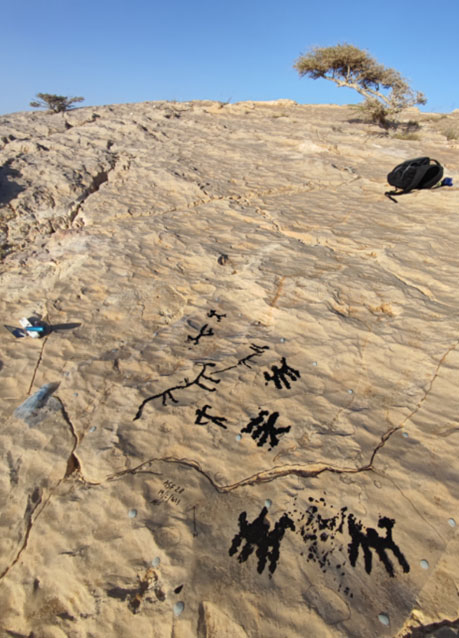 PRAGUE, CZECH REPUBLIC—According to a statement released by the Czech Academy of Sciences (CAS), international teams led by the CAS' Institute of Archaeology have unearthed archaeological features from several periods of human occupation in the deserts of Oman, including stone ritual monuments that resemble England's Stonehenge. These structures, called triliths, were built some 2,000 years ago in what is now the Dhofar province of southern Oman. It is not yet clear who constructed them or what they were used for. Archaeologists also discovered stone hand axes dating to between 300,000 and 1.3 million years ago, a period that coincided with the first human migration out of Africa. At the site of Nafün in central Oman's Duqm province, a second team of researchers found a Neolithic tomb dating to between 5000 and 4600 B.C. Beneath a megalithic structure were the tomb's two burial chambers, which contained the remains of at least several dozen people, archaeologist Alžběta Danielisová said. Nearby, the team documented rock engravings associated with human settlements spanning from 5000 B.C. to A.D. 1000. To read about 5,000-year-old buildings belonging to the Umm al-Nar culture that were unearthed at the site of Dahwa, go to "Around the World: Oman."
PRAGUE, CZECH REPUBLIC—According to a statement released by the Czech Academy of Sciences (CAS), international teams led by the CAS' Institute of Archaeology have unearthed archaeological features from several periods of human occupation in the deserts of Oman, including stone ritual monuments that resemble England's Stonehenge. These structures, called triliths, were built some 2,000 years ago in what is now the Dhofar province of southern Oman. It is not yet clear who constructed them or what they were used for. Archaeologists also discovered stone hand axes dating to between 300,000 and 1.3 million years ago, a period that coincided with the first human migration out of Africa. At the site of Nafün in central Oman's Duqm province, a second team of researchers found a Neolithic tomb dating to between 5000 and 4600 B.C. Beneath a megalithic structure were the tomb's two burial chambers, which contained the remains of at least several dozen people, archaeologist Alžběta Danielisová said. Nearby, the team documented rock engravings associated with human settlements spanning from 5000 B.C. to A.D. 1000. To read about 5,000-year-old buildings belonging to the Umm al-Nar culture that were unearthed at the site of Dahwa, go to "Around the World: Oman."
“Arabian Stonehenge” Uncovered in Oman Desert
